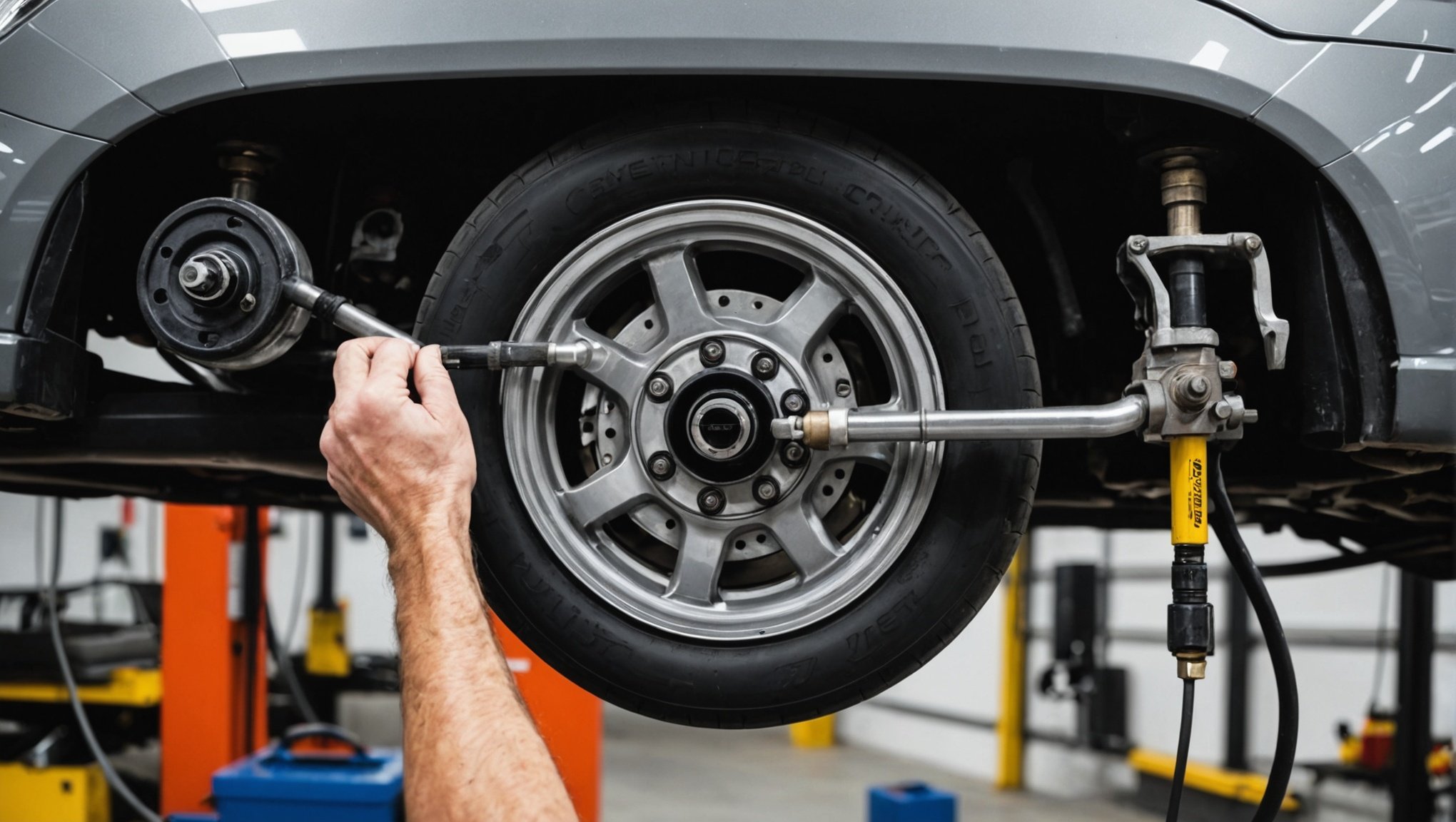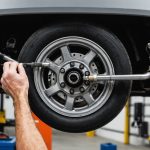Hydraulic brake lines are vital for your car's braking system, yet their maintenance often goes overlooked. Neglect can lead to costly repairs and safety hazards. By understanding how to protect these components during routine upkeep, you can enhance performance and prolong their lifespan. Explore essential tips to keep your brake lines in top shape, ensuring you drive confidently and safely. Your vehicle deserves the best care, and so do you. Take proactive steps to safeguard your ride.
Importance of Hydraulic Brake Line Maintenance
Understanding the role of hydraulic brake line maintenance is crucial for ensuring brake system safety. These lines are responsible for transmitting brake fluid from the master cylinder to the brake calipers, which then apply force to the brake pads, slowing down or stopping the vehicle. Without proper maintenance, the entire brake system can become compromised.
Have you seen this : Maximize Your Minivan”s Safety: Expert Tips for Adjusting Airbag Sensitivity Settings
Neglecting hydraulic brake line maintenance can lead to severe consequences. Over time, brake lines can develop leaks or become corroded, reducing the efficiency of the brake system. This can result in increased stopping distances or, in extreme cases, complete brake failure. Such scenarios not only endanger the driver but also pose a risk to other road users.
Regular inspection and care of hydraulic brake lines are essential preventive measures. By routinely checking for signs of wear, damage, or corrosion, potential issues can be identified and addressed before they escalate. This proactive approach ensures the longevity and reliability of the brake system, enhancing overall vehicle safety. Additionally, maintaining brake lines can save money in the long run by avoiding costly repairs or replacements due to neglect.
Also to discover : Essential Steps to Prep Your All-Wheel-Drive Vehicle for a Safe Snowy Adventure: A Comprehensive Guide
Common Issues with Hydraulic Brake Lines
When it comes to brake line issues, understanding the signs of wear and damage is vital for maintaining vehicle safety. Common indicators include visible cracks, bulges, or a spongy brake pedal feel, which can signal underlying problems. Regular inspection is key to identifying these early signs and preventing more severe complications.
Corrosion is a frequent culprit of brake line deterioration. It often results from exposure to road salt, moisture, and other environmental factors. Over time, corrosion can weaken the brake lines, making them susceptible to leaks. To mitigate corrosion, it's important to routinely clean and inspect the brake lines, especially after driving in harsh conditions.
Leaks in hydraulic brake lines are another prevalent issue. A leak typically results in a noticeable drop in brake fluid levels, leading to reduced braking performance. If left unaddressed, leaks can cause the brake system to fail entirely. Checking for fluid puddles under the vehicle or a soft brake pedal can help detect leaks early.
Addressing these brake line issues promptly not only enhances safety but also prolongs the lifespan of the brake system. Regular maintenance and vigilance are essential to prevent these common problems from escalating.
Tools Needed for Brake Line Maintenance
When undertaking brake line maintenance, having the right brake maintenance tools is essential. These tools ensure that inspections and repairs are carried out effectively and safely.
Essential Tools for Inspecting Brake Lines
To properly inspect hydraulic brake lines, a brake line inspection mirror is invaluable. This tool allows you to see areas that are hard to reach, ensuring no signs of wear or damage are missed. Additionally, a flashlight can aid in illuminating dark spaces under the vehicle.
Recommended Products for Cleaning and Protection
For cleaning brake lines, a brake cleaner spray is highly recommended. This product efficiently removes grime and debris, preventing corrosion. To protect the lines after cleaning, applying a rust inhibitor can provide a protective barrier against environmental damage.
Safety Equipment to Use During Maintenance
Safety is paramount when working with hydraulic brake tools. Always wear protective gloves to safeguard your hands from harmful chemicals and sharp edges. Additionally, safety goggles are crucial to protect your eyes from brake fluid splashes or debris.
Having these essential tools and safety equipment on hand ensures that brake line maintenance is both effective and secure.
Step-by-Step Inspection Process
Conducting a thorough brake line inspection is crucial for vehicle safety. A structured maintenance checklist ensures all areas are covered during the process. Begin by parking the vehicle on a level surface and securing it with wheel chocks.
Visual Inspection Procedure
Start the inspection by examining the brake lines for any visible signs of wear, such as cracks or bulges. Use a flashlight to illuminate hard-to-see areas. Pay special attention to areas where the lines bend or connect, as these are prone to damage.
Key Focus Areas
During the safety inspection, focus on the brake line connections at the master cylinder and calipers. Check for any signs of fluid leakage, which could indicate a compromised line. Additionally, inspect the line brackets and clips to ensure they are secure and free from rust.
Documenting and Tracking
As you perform the inspection, document any findings in a maintenance checklist. Note the condition of each line and any issues detected. This documentation is vital for tracking the vehicle's maintenance history and planning future repairs. Regularly updating this checklist helps in maintaining a consistent safety standard.
Cleaning Hydraulic Brake Lines
Proper cleaning of brake lines is essential for maintaining their efficiency and preventing corrosion. To begin, select a suitable cleaning agent, such as a brake cleaner spray. This product is designed to effectively remove dirt and grime without leaving residues that could harm the brake system.
Recommended Cleaning Techniques
Start by positioning the vehicle on a level surface and securing it with wheel chocks. Use a flashlight to identify any areas of grime accumulation on the brake lines. Spray the brake cleaner directly onto these areas, allowing the solution to penetrate and dissolve contaminants. A soft brush can be used to gently scrub away stubborn deposits.
Importance of Brake Fluid Maintenance
Regular brake fluid maintenance is crucial for optimal brake performance. Flushing the brake fluid at recommended intervals helps remove moisture and contaminants that can lead to corrosion. To do this, drain the old fluid completely and refill with fresh brake fluid. This process ensures the hydraulic brake system remains responsive and effective.
By employing these cleaning techniques and maintaining brake fluid integrity, the longevity and reliability of the brake lines are significantly enhanced. Regular attention to these maintenance tasks can prevent costly repairs and ensure safer driving conditions.
Protecting Brake Lines from Damage
Ensuring brake line protection is essential for maintaining the integrity of your vehicle's braking system. Environmental factors such as moisture, road salt, and debris can cause significant wear over time. Implementing preventive care strategies can mitigate these risks.
Tips for Shielding Brake Lines
To shield brake lines from damage, consider using protective sleeves or coatings. These solutions provide a barrier against corrosive elements, extending the lifespan of the brake lines. Protective sleeves are particularly effective in areas prone to road salt exposure, while coatings can repel moisture and prevent rust.
Parking and Storage Considerations
When it comes to parking and storage, thoughtful practices can aid in damage prevention. Always park on a clean, dry surface to reduce exposure to harmful substances. If storing the vehicle for an extended period, ensure it is in a sheltered environment to avoid moisture accumulation. Regularly moving the vehicle during storage can also prevent brake line deterioration.
By embracing these strategies, you can significantly enhance the durability of your brake lines. Prioritising preventive care not only safeguards your braking system but also contributes to safer driving conditions and reduces the likelihood of costly repairs.
Recognizing When to Replace Brake Lines
Understanding the replacement signs for brake lines is crucial for maintaining vehicle safety. One of the primary indicators that brake line replacement is necessary includes visible wear such as cracks or bulges. These signs suggest that the structural integrity of the brake lines is compromised, which can lead to brake failure if not addressed promptly.
Frequency of Brake Line Replacement
The maintenance frequency for brake line replacement depends largely on vehicle usage and environmental conditions. Typically, brake lines should be inspected by a professional every 30,000 to 50,000 miles. However, if the vehicle is frequently exposed to harsh conditions like road salt or extreme temperatures, more frequent inspections and replacements might be necessary.
Importance of Professional Inspection
A professional inspection is vital for accurately assessing the condition of brake lines. Experts can identify subtle signs of wear that may not be visible to the untrained eye. They can also advise on the appropriate timing for brake line replacement, ensuring that the braking system remains reliable and effective. Regular professional evaluations not only enhance safety but also help in avoiding unexpected and costly repairs.
Safety Precautions During Maintenance
Ensuring brake maintenance safety is paramount when working on hydraulic brake lines. Proper handling of brake fluid and adherence to safety protocols can prevent accidents and injuries.
Guidelines for Safely Handling Brake Fluid
Brake fluid is a hazardous substance that requires careful handling. Always work in a well-ventilated area to avoid inhaling fumes. Use a brake fluid reservoir to prevent spills and ensure the fluid does not come into contact with skin or eyes. If contact occurs, rinse immediately with water and seek medical advice if irritation persists.
Personal Protective Equipment (PPE) Recommendations
Wearing appropriate personal protective equipment (PPE) is critical. This includes:
- Protective gloves to prevent skin exposure to brake fluid.
- Safety goggles to shield eyes from splashes.
- A mask to avoid inhaling harmful vapours.
These precautions reduce the risk of injury during maintenance tasks.
Emergency Procedures in Case of Brake Line Failure
In the event of a brake line failure, remain calm and follow these steps:
- Safely pull over to the side of the road.
- Activate hazard lights to alert other drivers.
- Contact roadside assistance for professional help.
Understanding these safety tips ensures a secure environment during brake maintenance activities.
Resources for Further Learning
Expanding your knowledge on brake maintenance is essential for both novices and experienced car enthusiasts. There are numerous brake maintenance resources available, ranging from books to online platforms, that provide comprehensive insights into maintaining your vehicle's brake system.
Recommended Books and Online Resources
For those who prefer traditional learning, several books offer in-depth guidance on car maintenance. Titles like "Automotive Brake Systems" provide detailed explanations and illustrations. Online resources, including video tutorials and DIY guides, are excellent for visual learners who want step-by-step demonstrations.
When to Seek Professional Help Versus DIY
Understanding when to opt for professional assistance is crucial. While DIY projects can be fulfilling and cost-effective, certain complex brake issues require the expertise of a professional mechanic to ensure safety and precision. It's important to recognise your limits and seek help when necessary.
Community Forums and Discussion Groups
Engaging with community forums and discussion groups can be invaluable. Platforms like Reddit and dedicated car enthusiast forums allow you to connect with others who share your interest in car maintenance. These communities are great for exchanging tips, troubleshooting issues, and staying updated on the latest brake maintenance resources.
















